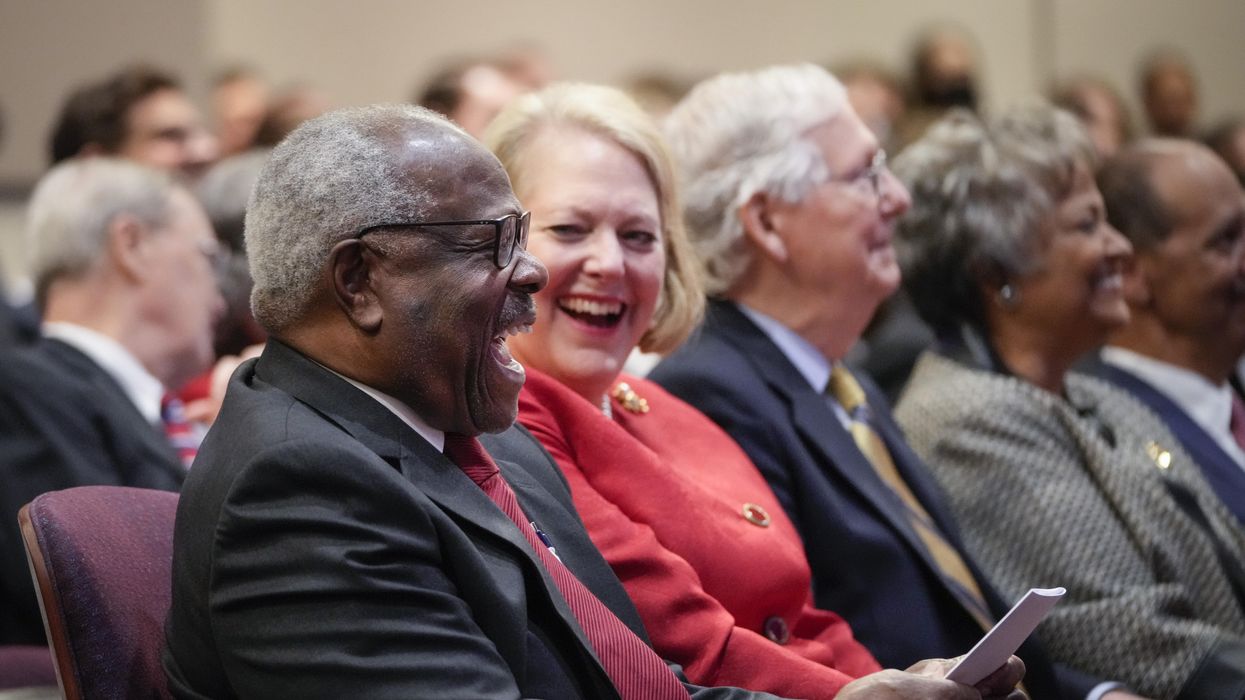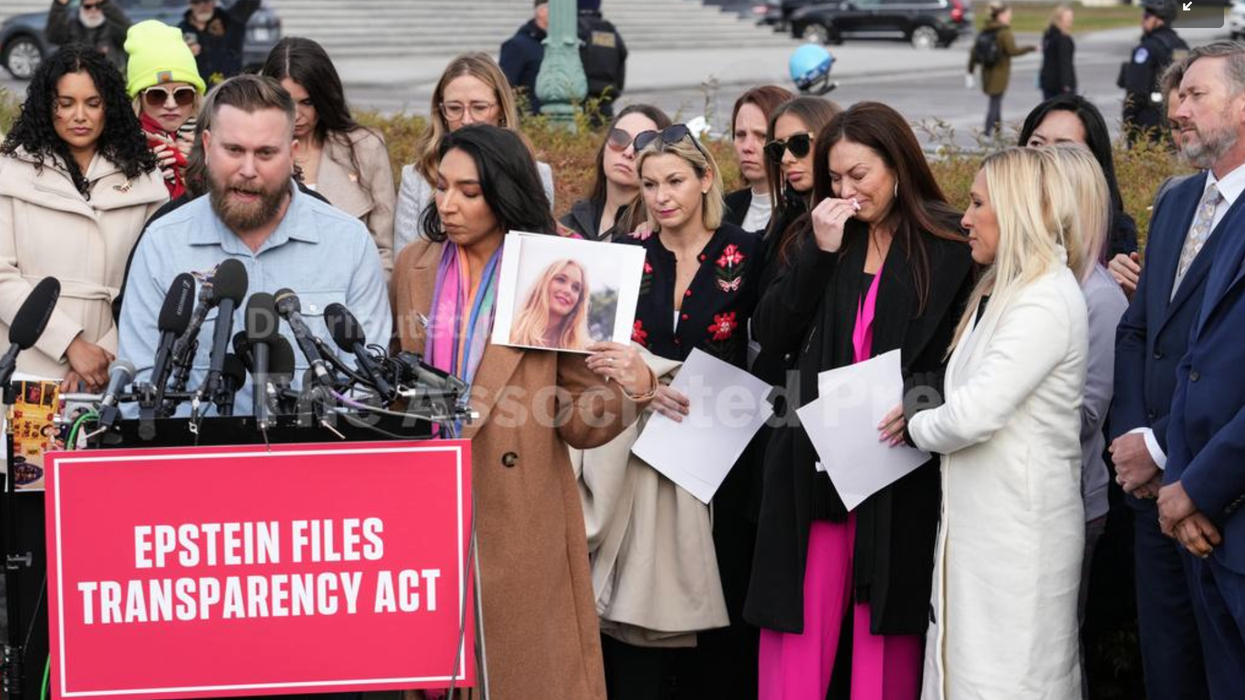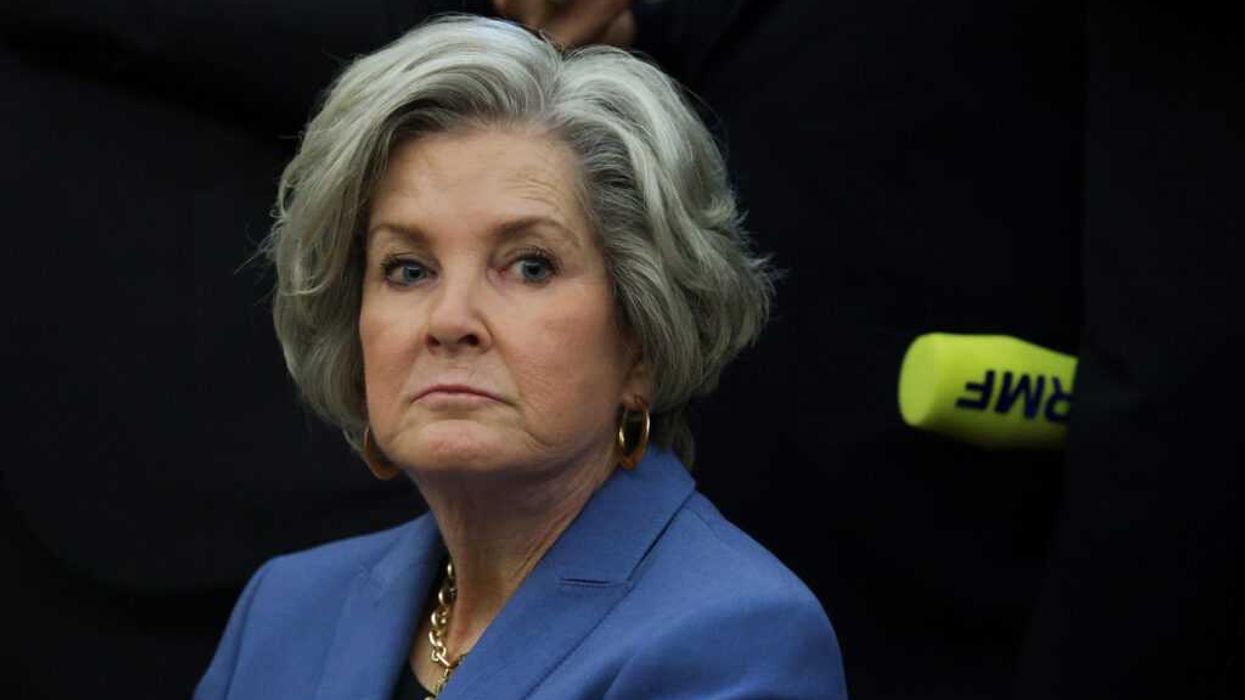Goldstone’s most recent book is "On Account of Race: The Supreme Court, White Supremacy, and the Ravaging of African American Voting Rights."
It was recently revealed that conservative activist Virginia “Ginni” Thomas, wife of Supreme Court Justice Clarence Thomas, had not only participated in the Jan. 6, 2021, rally in which then-President Donald Trump urged supporters to march on, and perhaps attack, the Capitol, but also that she fully bought into the fantasy that the presidency had been stolen from Trump and even urged government leaders to attempt to overturn the election.
That, coupled with Justice Thomas being the only dissenter from the court’s decision to allow a congressional committee access to records of the event, created an outcry — largely on the left — for Thomas to recuse himself from impending Jan. 6 cases and even calls (only on the left) for his censure or impeachment.
Ginni Thomas protested that her political views were her own, that she was entitled to behave as she liked so long as she violated no laws, and that she and her husband discussed neither his cases nor her politics at home. While the first two are undoubtedly correct, the third stretches credibility. It is extremely unlikely that the Thomas dinnertime discussions were limited to the latest football news or a recent episode of “Emily in Paris.” Even if the couple did discuss political or even judicial matters, however, they likely would be no different than any number of other judges or justices.
The distinction seems to be not only that Ginni Thomas’s views are ultraradical and anti-democratic (anti-Democratic as well) but that she actively participated in an event that history will record as an attack on the system her husband has sworn to uphold. But however egregious was Mrs. Thomas’ behavior — or Justice Thomas’ — there seems to be no recourse available for what has become an imperial Supreme Court in which justices can do whatever they please, impervious to criticism and immune from restraint. Critics lament that those who framed the Constitution should never have allowed one branch of government to have so much unchecked power.
In fact, they did not … at least not intentionally.
Every school child learns that the American government is a system of “checks and balances,” although there is often insufficient attention paid to what the phrase actually means. At the Constitutional Convention, where the delegates faced many seemingly intractable differences, one principle on which virtually all of them agreed was that the new government must protect against despotism. And so, power was diffused, no one branch of government nor house of the legislature nor even one political faction able to seize power at the expense of the others. These “checks” on absolute authority would create a “balance” in which a certain degree of consensus would be required to enact laws or perform other functions with which the new government would be entrusted.
In such a system, the courts were seen to have only a limited role, and that is what the Framers attempted to ensure. Since judges would be appointed rather than elected, delegates understood the check on their power must emanate from the other branches of government rather than directly from the people. But the notion of even creating a federal judiciary was sufficiently unpopular that Article III was drawn only generally, consisting of merely six short paragraphs that were vague on how those checks would be implemented. In fact, depending on how the language was interpreted, whether any checks at all existed could seem uncertain. If, for example justices serving during “good behavior” is construed as serving for life rather than serving without mixing in politics — which might well be what the delegates meant — it would be virtually impossible to remove a judge except through impeachment, a process that was made intentionally difficult and unwieldy.
Although it is a near certainty that the Framers did not wish to exempt the judiciary from the checks they applied to the two other branches, the manner in which Article III was drafted indicates that the delegates were hoping Congress would subsequently provide the specifics. But in failing to include precise checks on judicial power and with language so ambiguous, the Framers were taking an enormous risk.
Alexander Hamilton attempted to paper over the danger in “Federalist 78” by assuring readers the judiciary would be “beyond comparison the weakest of the three departments of power.” A competing essayist, “Brutus,” was not so naïve. Of the justices, he wrote, “In their decisions they will not confine themselves to any fixed or established rules, but will determine, according to what appears to them, the reason and spirit of the constitution. The opinions of the supreme court, whatever they may be, will have the force of law; because there is no power provided in the constitution that can correct their errors or control their adjudications. From this court there is no appeal.”
In addition, the failure to define a code of ethics for Supreme Court justices left them to define proper conduct on their own, a strategy that anyone who has ever attempted to reform a police department, lobbying, voting rights, or myriad other activities would recognize as laughable. No justice has ever been publicly censured by his or her fellows and certainly none have been removed. It is unclear whether even Chief Justice John Roberts could compel Thomas to recuse himself, or if he would opt to make the effort. As a result, short of being the first justice ever successfully impeached — Samuel Chase was acquitted by the Senate in 1805 — Clarence Thomas is free to cast votes on cases in which he has a personal and political interest according to whatever standards he so chooses.
As a result, the public’s approval of the court, now at an all-time low, might sink even lower, but Justice Thomas can be certain that those family dinners at which neither politics nor jurisprudence is discussed will be the more harmonious for it.



















